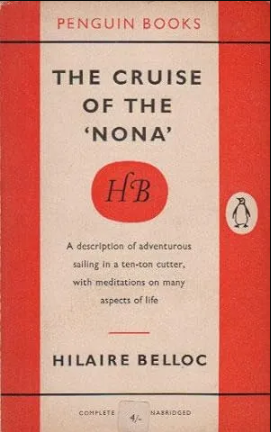World War Two
Published 7 Oct 2023The Warsaw Uprising comes to its conclusion, a tragic one for the Poles. In the field in Europe, there are Allied attacks toward Aachen, Bologna, and Debrecen, while in China the Japanese have begun a new phase of their Ichi Go Offensive.
(more…)
October 8, 2023
The End of the Warsaw Uprising – WW2 – Week 267 – October 7, 1944
Richard Blair’s memories of his father, George Orwell
Jonathon Van Maren contacted Richard Horatio Blair, the adopted son of George Orwell to discuss his memories of his famous father:
“My story starts on the 14th of May, 1944, when I was adopted by Eric Arthur Blair and his wife Eileen,” he told me. “This was during the Second World War. He’d been wanting a child for several years because he felt, rightly or wrongly, that he was unable to have children himself. I think this was compounded slightly by the fact that Eileen — my mother — was not very well herself, and in fact when I was ten months old, in March of 1945, she went to the hospital in Newcastle, which was the area where she was born and had gone to school. She went into a nursing home and died very soon after being anesthetized to have a hysterectomy. She probably had cancer, was very anemic, and simply had a heart attack on the operating table and died.”
The adoption had come about when Eileen was told by her sister-in-law, Dr. Gwen Shaughnessy, that she knew of a pregnant woman whose husband was off fighting. Orwell and Eileen adopted Richard when he was only three weeks old, and Orwell ensured that he alone would be known as Richard’s father by burning the names of the birth parents from the birth certificate with a cigarette. Richard would never know Eileen, as she died a mere nine months after the adoption took place, leaving the little boy and Orwell to fend for themselves. Some of Orwell’s friends suggested that perhaps he turn Richard over to someone else, but Orwell was having none of it. “I’ve got my son now, I’m not going to give him over,” Blair recalled. Blair even remembers Orwell “changing my nappy and feeding me after my mother died.”
“Meanwhile, my father had been asked to go to Germany at the end of the war by his friend, a gentleman by the name of David Astor of the Astor family,” Blair told me.
He was the proprietor of a newspaper called The Observer, and he asked my father — they had met during the war and become friends — to go to Germany after the war to observe what was happening, and it was while he was in Paris that he got a telegram telling him that Eileen, my mother, had died. He had to rush back and attend to the funeral and funeral arrangements. He decided the best thing he could do would be to go back to Germany and continue his war report, so that’s what he did. I was placed in the hands of relatives and friends to be looked after. I was cared for from that period onward by a nanny.
In 1946, he had decided to give up his reviews and extra work, because by now he had published his first major book, Animal Farm, which gave him enough resources to think about what to do next. And he had in his mind by then that he wanted to write what turned out to be 1984, and he decided to take the invitation of his friend David Astor to go to a remote island off the west coast of Scotland called Jura. He went up for a holiday and spent a couple of weeks there in the early part of 1946, came back, and announced that he would like to move out of London to this island of Jura and rent a farmhouse called Barnhill. A few weeks later I joined him with my nanny at the farmhouse, a place he had indicated to a friend was a very ‘un-get-at-able’ place.
Indeed it was. To reach the remote Hebridean island from London, “you had to take a train and several ferries, and then a taxi from the top part of the island, and then for the last five miles you had to walk,” Blair recalled. At first, it was Richard, Orwell, and his nanny, Susie Watson. This didn’t last long: Watson clashed with Orwell’s younger sister Avril and returned to London. “From that point on,” Blair told me, “I was cared for by my father’s sister Avril, and that continued well past when he died in 1950.” In the meantime, Blair still had a few precious years with his ailing father, who was trying to balance his fear of passing on his tuberculosis to his son with wanting to be an involved father. “He was really hands-on in a way that was really unusual for that era,” Blair told one interviewer.
In fact, he was so hands-on that he even worried about Richard’s television consumption, which is perhaps not surprising from someone who was so concerned about how people absorbed information — but Richard was, at this point, a very small child. “As a father he was completely devoted to me,” Blair told me. “He was terribly worried about my emotional development simply because he had TV, and he was very concerned that the views [on TV] might be passed on to me.” Blair still bears a scar on his temple from balancing on a chair while “watching him make a wooden toy for me”. He fell off the chair, cracked his head, and was bustled down to the village for a few stitches in the enormous gash on his forehead. “There’s a groove in the bone,” he ruefully told one interviewer. But there were no tests in those days, and so his head was sewn shut and he was sent back home again.
The Grave of Canada’s Greatest General: Sir Arthur Currie
OTD Military History
Published 23 Jun 2023The grave of General Sir Arthur Currie in Mount Royal Cemetery in Montreal, Quebec. Arthur Currie was the commander of the Canadian Corps from June 1917 to the end of World War 1. Appointed as the Principal and Vice-Chancellor of McGill University in 1920, he held that position until his death in 1933.
(more…)
October 7, 2023
“Many people who hold ‘luxury beliefs’ … are oblivious to the consequences of their views”
Rob Henderson, guest-posting at The Free Press, illustrates several recent examples of well-connected people holding what he coined as “luxury beliefs” being suddenly introduced to the real-world consequences of their beliefs:
Recently, two high-profile supporters of “justice reform” were murdered.
At 4 a.m. on Monday, Ryan Carson, a 32-year-old social justice and climate change activist, was walking with his girlfriend in Bedford–Stuyvesant, Brooklyn, when he was stabbed to death by a stranger. Only a few hours earlier in Philadelphia, activist and journalist Josh Kruger was shot and killed in his home.
And two Democratic lawmakers who voted to “redirect funding to community-based policing reforms” have been recent victims of violent crime.
On Monday night, blocks away from the Capitol in Washington, D.C., Congressman Henry Cuellar was carjacked by three armed men. (The lawmaker survived the incident unscathed.) In February, Angie Craig was attacked in an elevator at her apartment building in Capitol Hill. A homeless man demanded she allow him into her home to use the restroom, then he punched her and grabbed her around the neck. She escaped after throwing hot coffee on him.
Of course, these people did not deserve harm because of their support for soft-on-crime policies. But I’ve long argued that many people who hold “luxury beliefs” — ideas and opinions that confer status on the upper class, while often inflicting costs on the lower classes — are oblivious to the consequences of their views. Support for defunding the police is a classic example.
Luxury beliefs can stem from malice, good intentions, or outright naivete.
But the individuals who hold those beliefs, the people who wield the most influence in policy and culture, are often sheltered when their preferences are implemented.
Some online commenters have said that my luxury beliefs thesis is undermined by these tragic events, because the victims were affluent and influential — and they still suffered the consequences of their beliefs.
But the fact remains that poor people are far more likely to be victims of violent crime. For every upper-middle-class person killed, 20 poor people you never hear about are assaulted and murdered. You just never hear about them. They don’t get identified by name in the media. Their stories don’t get told.
Eastern Front Tank Warfare 1944
World War Two
In this conflict, we’ve seen armored warfare on a greater scale than anything before or since. Indy takes a look at some of the tanks slugging it out on the Eastern Front, from the long-serving Panzer III and IV, to the newer and more powerful Tiger and T-34 85, and the monstrous IS-2.
(more…)
Wab Kinew, Manitoba’s incoming Premier
Colby Cosh profiles the first Canadian provincial premier of First Nations heritage, Wab Kinew of Manitoba:
My colleague Michael Higgins has an excellent column in Friday’s Post about incoming Manitoba premier Wab Kinew and the remarkable victory speech he gave late Tuesday after his New Democrats won the provincial election. Kinew tackled the usual priorities of the moment, giving love to his own partisans and talking about how his party’s victory means a brighter future for Manitobans. But he also added an unusual personal message with an obvious specific audience, knowing that Canadians ordinarily don’t notice most anything that happens in Manitoba and that he may never again be watched by so many eyeballs.
Kinew is the first-ever First Nations premier of a Canadian province, and that’s a “first” that we dare not dismiss as the usual box-checking diversity exercise. Twenty years ago, as a young and aimless alcoholic, Kinew amassed a brief track record of violence that would probably disqualify a white politician for high office forever. But he pulled himself together while there was still time, became a celebrated broadcaster and found his way into an unlikely political career, becoming leader of the Manitoba NDP in 2017.
So, yeah, Kinew’s diversity bona fides helped make this possible … and the incumbent Manitoba Conservatives did their bit to help, running a re-election campaign characterized by comically daft creepiness. Kinew has made a point of not underplaying his troubled background, although when it was brought up by Conservatives on social media during the campaign, the favourite NDP counter-tactic seems to have been to point out the killer premier next door in Saskatchewan. Yes, us western voters sure have to do a lot of forgiving.
As it turned out, however, all this ugliness led to Kinew’s victory address — which, in turn, became what can only be called a fine and hopeful small-c conservative moment. He told troubled youths still in his old predicament — “the party lifestyle” — to stop “making excuses” and join the wider community.
“To young people out there who want to change your life for the better: you can do it,” the premier-designate said. “But here’s the thing: you have to want it … If you want to join the workforce, get a new career, it has to be you that takes the first step. And if you are dealing with some kind of illness, and want to find healing, it has to be you to decide to move forward.
Rearming West Germany: The G1 FAL
Forgotten Weapons
Published 19 Jun 2023Today we are taking a look at a German G1 pattern FAL. The initial purchased of the G1 were actual made by the German Border Guard (the Bundesgrenschutz). In the aftermath of World War Two, the western Allies decided to perpetually disarm Germany, and German security was provided by French, British, and American forces. As the Iron Curtain fell across Europe, that attitude softened — West Germany was on the front lines of the Cold War, and could be a valuable ally against Communism in the East. Thus in 1951, the West German Bundesgrenzschutz (Border Guards) were formed and armed — basically with all WW2 Wehrmacht equipment. Looking to improve its small arms in 1955/56, the BGS tested a number of modern rifles and decided to adopt the FAL.
The BGS initially ordered 2,000 FAL rifles from FN, with wooden hand guards and a fixed flash hider (essentially a standard Belgian FAL) — these are known as the “A” pattern. A second BGS order for 4,800 more rifles followed, this time of the “B” pattern with a metal handguard and folding bipod. This was the first use of an integral bipod on the FAL, and would go on to be a popular option for other buyers.
In 1955, the German Army was reinstated as the Bundeswehr. Looking over the BGS rifle testing, the Bundeswehr also decided to adopt the FAL, and placed and order for 100,000 rifles — the “C” pattern. These include sights lowered 3mm by specific German request, as well as a set of swappable muzzle devices (flash hider and blank-firing adapter).
Ultimately, FN was unwilling to license FAL production to West Germany, and this drove the Germans to adopt the Spanish CETME as the G3 rifle, which it was able to license. The Bundeswehr G1 rifles were eventually transferred to the BGS and later sold to other allies as surplus.
Special thanks to Bear Arms in Scottsdale, AZ for providing access to this rifle for video!
(more…)
QotD: Saudi princes
I see that Prince Abdul-Rahman bin Abdulaziz al Saud died the other day. If you’re having trouble keeping track of your Saudi princes, well, I don’t blame you. Unlike the closely held princely titles of the House of Windsor, the House of Saud is somewhat promiscuous with the designation: there are (at the time of writing) over 10,000 Saudi “princes” running around the country — and, in fact, at this time of year, more likely running around Mayfair and the French Riviera, exhausting the poor old blondes from the escort agencies. I believe that’s Abdul-Rahman at right, although to be honest all Saudi princes look alike to me, except that some wear white and others look very fetching in gingham. As I once remarked to Sheikh Ghazi al-Ghosaibi, the late cabinet minister, he was the only Saudi I knew who wasn’t a prince.
Abdul-Rahman was a longtime Deputy Defense Minister, whose catering company, by happy coincidence, held the catering contract for the Defense Ministry. The first Saudi prince to be educated in the west, he was a bit of a cranky curmudgeon in later years, mainly because of changes to the Saudi succession that eliminated any possibility of him taking the throne. But he nevertheless held a privileged place as the son of Ibn Saud, the man who founded the “nation” and stapled his name to it. When I say “the son”, I mean a son: Ibn Saud had approximately 100 kids, the first born in 1900, the last over half-a-century later, in 1952, a few months before ol’ Poppa Saud traded in siring for expiring.
Abdul-Rahman’s mother was said to be Ibn Saud’s favorite among his 22 wives — or, at any rate, one of the favorites. Top Five certainly. She also had the highest status, because she bore him more boys — seven — than any other other missus. They’re known as the Sudairi Seven or, alternatively, the Magnificent Seven. She also gave him seven daughters. They’re known as the seven blackout curtains standing over in the corner. This splendidly fertile lady’s name was Hussa bint Ahmed, and she was Ibn Saud’s cousin once removed and then, if I’m counting correctly, his eighth wife. But she’s a bit like the Grover Cleveland of the House of Saud — in that he’s counted as the 22nd and 24th President of the United States, and she’s the eighth wife and also either the tenth or eleventh. He first married her when he was 38 and she was 13. But he divorced her and then remarried her. In between their marriages she was married to his brother, but Ibn Saud was a sentimental lad and never got over his child-bride-turned-sister-in-law, so he ordered his brother to divorce her.
Don’t worry, though: In the House of Saud, it’s happy endings all round. Two of their daughters wound up marrying two of the sons of another brother of Ibn Saud. The Saudi version of Genealogy.com must be a hoot: “Hey, thanks for the DNA sample. You’re 53.8 per cent first cousin, and 46.2 per cent uncle.”
Mark Steyn, “The Son of the Man who Put the Saud in Saudi Arabia: Prince Abdul-Rahman bin Abdulaziz al Saud, 1931-2017”, Steyn Online, 2017-07-18.
October 6, 2023
Farnborough Airshow – 1959 (in colour)
spottydog4477
Published 28 Dec 2009Farnborough Airshow – 1959 (in colour)
QotD: The “Marian Reforms” to Roman legions
First off we need to establish what changes are generally understood to fall under the heading of the “Marian Reforms”, before we then try to actually locate those changes in our evidence (and then marvel at our general inability to do so). Understood broadly the Marian reforms are supposed to be a combination tactical, organizational and equipment reforms associated with Gaius Marius in the last decade of the 100s. As it turns out, Marius initiated almost none of these reforms, some of these supposed reforms didn’t happen at all at any point and some of them happened outside the time period in question.
In short, the things that are supposed to have happened here are:
- (Tactical-Organizational) A shift in battle tactics from the two-century maniple (c. 120 men) to the six-century cohort (c. 480 men) as the primary tactical unit on the battlefield,1 as well as the primary organizational unit of the Roman army. Elements of the older Polybian legion persist in names and titles.
- (Organizational) A shift from poorly paid conscript soldiers drawn from Rome’s propertied class (the assidui) drawn up through the dilectus to the use of volunteers drawn from Rome’s property-less poor (the proletarii or capite censi) who served as effectively professional soldiers, lacking any other means of subsistence.
- (Organizational) The practice of granting land and/or citizenship to Roman soldiers on discharge as a regular feature of Roman service.
- (Organizational) The end of the light infantry velites and Roman citizen cavalry (the equites) as part of the legion, as a product of the next point making such wealth distinctions unimportant.
- (Logistical) The introduction of state-supplied equipment (in place of self-supplied equipment) which enabled the mass-recruitment of the proletarii, as they no longer needed to be able to afford their own equipment, as part of a reform ascribed by some scholars to Gaius Gracchus (trib. 123-2).
- (Equipment) The introduction of a new design of pilum with a wooden rivet designed to break on impact with enemy shields (Plut. Mar. 25).
- (Equipment) The prioritization of the aquila, the eagle standard, over other standards in the legion (Plin. NH 10.16), often framed as the aquila fully replacing these other standards.
- (Equipment) The introduction of the furca, a Y-shaped pole for carrying the soldier’s pack (the sarcina), leading to better legionary logistics.
As we’re going to discuss, some of these things happened – but not because of Marius – and some of them didn’t happen at all. So how on earth did this idea of a big “Marian Reform” end up so pervasive in how we (used to) understand the Roman army of this period? The answer really has a lot to do with gaps (lacunae) in our sources. For the early second century, we have two really quite good sources on Roman military activity, Livy and Polybius. But both give out by mid-century,2 leaving us relatively blind until Julius Caesar‘s comentarii (de Bello Gallico and de Bello Civili) suddenly give us a massive infusion of information as we can see Caesar’s army functioning often in quite minute detail.
And we see what seem to be quite different armies! Caesar is using cohorts as tactical and operational units, rather than maniples. His armies don’t seem to have any citizen cavalry in them and they seem to be very loyal to him; he’s using a lot of non-citizens in auxiliary roles in a way that we know will become very standard in the imperial period (eventually making up half the army by Tiberius‘ reign). And indeed, moving forward, the legions of the early empire end up a lot more visible to us, both because of the literary evidence (Tacitus!) and also because, as they become more stationary on fixed frontiers, they leave forts and inscriptions and other evidence we can see far more clearly than the ever-moving armies of the Roman Republic.
And then into that there is Gaius Marius. Remember that our sources in this period are a bit patchier, without a strong continuous narrative (but with a lot of sources so we generally have someone for most of it). But Marius gets a lot of focus because of his roles in the civil wars and his spectacular seven consulships, and the one thing we are told quite clearly about him is that in 107 when he raised his first consular army he broke tradition by accepting volunteers from the proletarii (Sall. Iug. 86.1; Plut. Mar. 9.1). The temptation then to see that substantial change (which, to be clear, our sources are exaggerating for reasons I’ll discuss in a moment) as connected to all the other changes from the “Polybian” legion to the “Caesarian” legion and thus to assume that Marius is doing all of them, reading far too deeply into a few lines of Sallust and Plutarch (the latter not generally a particularly good guide on military affairs).
And I should note finally at the outset that this all also plays into a tendency in our sources generally: ancient authors really like narratives where one particular aristocrat can be credited with making major reforms or innovations as an expression of their particular virtue. We’ve talked about this with Lycurgus, but it shows up consistently with rulers supposedly introducing new weapons and new practices as big, top-down reforms that, on closer inspection, turn out to be gradual changes we can see signs of happening over quite some time. It’s an understandable if irritating bias of habit for authors whose purpose in writing is the education of aristocrats on how to be leaders – every big change has to be a product of the character and leadership of aristocrats (even when it wasn’t). Plutarch, especially, of all ancient authors, loves these sorts of just-so stories and guess who we are heavily reliant on for the life of Gaius Marius? But until relatively recently, historians were often far more willing to accept these sorts of just-so stories than they should have been (in part because late 19th and early 20th century historians shared some of those same assumptions about elite leadership and in part because singular reforms make for compelling stories).
Bret Devereaux, “Collections: The Marian Reforms Weren’t a Thing”, A Collection of Unmitigated Pedantry, 2023-06-30.
1. Note that the size of the century has changed, from 60 to 80 as well.
2. Polybius’ history, already incomplete as we have it, ends, while Livy’s continuous narrative which originally went through the first century cuts out almost completely in 167, leaving us with just summaries of his work.
October 5, 2023
“Canada, where truck drivers are Nazis and Nazis are war heroes”
Donna LaFramboise on the “Coutts Four” — bona fide political prisoners of the Canadian state:
Gord Magill has a lengthy article over at Newsweek titled Meet the Four Men Being Held as Political Prisoners in Canada. These individuals are jointly accused of conspiring to murder police officers during a protest in Coutts, Alberta around the same time that the Freedom Convoy truckers were in Ottawa.
That’s a very serious charge, of course, but evidence appears scarce. I’ve not personally investigated this matter, but a former Toronto police detective named Donald Best has. In July, he outlined a long list of concerns, in addition to pointing out that “Everybody makes bail in Canada” — including the man “currently accused of the first degree murder of Toronto Police officer Jeffrey Northrup”.
Yet the Coutts men — three of whom have no criminal record — have been held without bail for nearly 600 days. Since they are legally innocent until proven guilty, this is horrifying.
As Gord writes in Newsweek, we are a country in which hard-working Canadians are called Nazis by the same Prime Minister whose government recently recognized an actual Nazi with a standing ovation in the House of Commons. What a strange state of affairs.
After speaking to each of the Coutts four, Gord provides a wealth of new info about them. These are working class guys — a power lineman, the owner of a small construction company, a master electrician, and a contractor. Three of them have children as young as 9, 10, and 11. Gord says only two of them “knew each other prior to their arrest”. It’s difficult to imagine a more unlikely group of cop-murder conspiracists.
The Soviet Spies who Kickstarted the Nuclear Arms Race
World War Two
Published 4 Oct 2023Last episode we saw Klaus Fuchs steal details of the American atomic bomb for the Soviet Union. But he’s only one component of a much bigger conspiracy. Today, Astrid introduces you to the mysterious web of Soviet atomic spies. Their work changed our world forever.
(more…)
From Hilaire Belloc’s sailboat to your nearest international airport terminal
The most recent review at Mr. and Mrs. Psmith’s Bookshelf considers Hilaire Belloc’s The Cruise of the “Nona”:
Late in the May of 1925, around midnight, Hilaire Belloc climbed into a tiny boat and put out to sea so that he would have some time to think. The sea gives ample time to think, especially if like Belloc you disdain the use of a motor. Some wag once jested that sailing is like being at war: long stretches of boredom punctuated by moments of abject terror. I suppose in some sense that’s correct, but give me the boredom of the sailboat any day over the boredom of the trench, the boredom of the cubicle, the boredom of endless doomscrolling.
Sailing is productive boredom, and seems unusually well calibrated for causing the mind to wander in interesting or delightful or just plain ridiculous directions. Maybe it’s the stimulating effects of the wind in your face and the smell of salt in the air, or maybe it’s the weird altered state of consciousness that comes from staring at the ocean. I think it’s because sailing is the human condition in miniature. It places you perfectly-balanced on a knife’s edge between agency and helplessness, and in so doing it both spurs the mind to activity and gives it space to relax and reflect.1
[…]
Anybody who’s travelled extensively in the third world has seen the modern version of this. There’s nothing intrinsic to being a reformer or a liberalizer that makes you an agent of American power, and yet … there’s a better than even chance that you are. After a while these people all blend together — the idealistic students, the LGBT activists, the NGO staffers, the embassy employees recruited from amongst the locals. They come from a hundred nations, from every conceivable race and religion, and yet something invisibly and inexorably molds them all into the same shape, like iron filings lining themselves up in the presence of a powerful magnet.
Soon they have American souls, and divided loyalties to match. The local regime panics and views them as an internal enemy, which only furthers their alienation from their motherland and their flight into the bosom of Global America. Most empires rule primarily though influence, not coercion, and this class of people is one of America’s most powerful weapons for maintaining and extending its hegemony.
A related phenomenon is the awful sameness that is slowly taking over the whole world. Perhaps your cruise ship docks at a dozen ports over the course of its journey, and every one of them looks exactly the same — the same tiki bar with the same sign, the same shops selling the same ornamental kitsch probably all made in the same factory. You aren’t visiting a place, you’re visiting a psychic manifestation of the Buffetverse, another outpost of Margaritaville, a Potemkin seaport with frozen daiquiris. You all know what I’m talking about. We make fun of it all the time, because cruise ships are for chuds. But it doesn’t just happen with cruise ships.
The cancer usually starts in an international airport. Form follows function, so it’s superficially reasonable that every airport on earth should look and feel exactly the same. But the real reason is that it follows in the wake of the kinds of people who fly into those airports, praising the broadening effects of foreign travel whilst terraforming everything they touch until it resembles the “arts district” of a midsize American city, replete with distressed wood finishes, gravid with craft beers. Real foreignness would cause these people to recoil in shock, or to demand a peacekeeping intervention. It’s not unusual for the imperial functionary class to be parochial, but what’s surreal about ours is how they combine the blinkered innocence of a farm boy with an ideology of weary cosmopolitanism.
None of this was as far along when Belloc took his little cruise, but the seeds had been planted, and he could feel in his bones that something horrible lay across the horizon. So he fights it the only way he knows how — by noticing and celebrating everything distinctive and local and weird about every place he visits. No island is too small for him to mention by name and recall a ghost story or two associated with it. No village is too commonplace for him to remark on the habits, physiognomy, and vices of the people who live in it. It’s the same spirit as that which animates Chesterton’s essay on cheese, but applied to a hundred hamlets and fishing ports, a paean to the regional diversity and distinctiveness that was already slipping away.
1. Oh hey, it’s the focused-mode and diffuse-mode of cognition! The best way to think deeply about anything is to toggle between them.
The Great War: Its End and Effects, Lecture by Prof Margaret MacMillan
McDonald Centre
Published 25 Jan 201922 January 2019, “How far did the Versailles Treaty make Peace?”, Professor Margaret MacMillan, Warden of St Antony’s College, Oxford. The lecture was sponsored by Christ Church Cathedral and the McDonald Centre for Theology, Ethics, and Public Life, Oxford.









